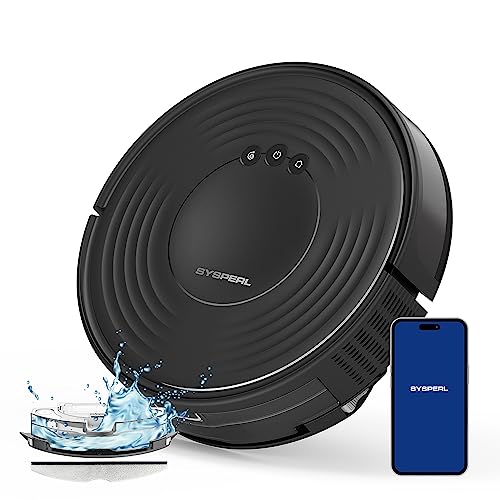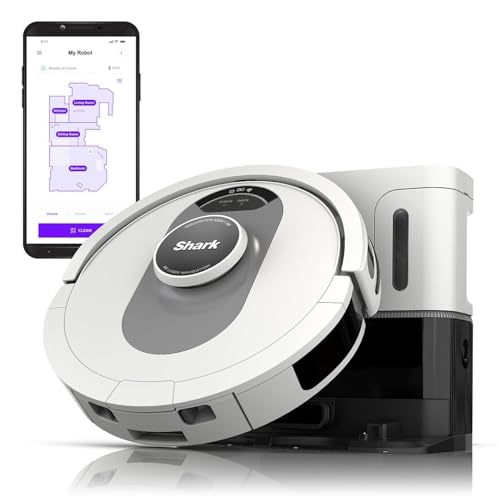10 Things Your Competitors Can Teach You About Cleaning Robot Mop And …
페이지 정보
작성자 Rodrick Mackell… 댓글 0건 조회 15회 작성일 24-06-02 21:54본문
 How to Take Care of a Robot Mop and Vacuum
How to Take Care of a Robot Mop and VacuumA robot vacuum and mop will save you lots of time cleaning. They also require regular maintenance such as emptying the dustbins, washing the disposable pads accordance with the manufacturer's instructions or removing the single-use ones and keeping the sensors clean.
App integration allows you to set power and schedules, as well as save maps and change settings.
1. Clean the Dirt Bin
Regular maintenance is required for the majority of robot vacuums and mops. This includes emptying the dirt bins, and washing pads, as well as keeping track of the replacement consumables. The better your maintenance of these components, the more they'll last. Some cleaning machines require a little extra attention, especially those that have water tanks.
First, empty the dustbin completely following every cleaning session. This is a simple task however it is vital for the proper operation of your robot. It is also important to keep the filter clean regularly. Consult the user manual for your specific model to determine how often and how you should clean the filter.
While the mopping function on your robot can remove a lot of dust from your floors, there are tiny particles that can accumulate in gaps and cracks on flooring. These include dandruff and hair particles, mites and dirt, as well as pet hair. To prevent these particles from causing health problems it is essential to make use of the vacuum cleaner or sweeping robots to clear these areas.
If you are planning to use your robot mop, then it is crucial to select one with high-quality hardware and large dust and water tanks. LEGEE is one of the biggest dust bins as well as a water tank among its competitors. This means that you don't need to stop cleaning to refill the tank.
Do not add vinegar or floor cleaners into the tank that holds water for your robot mop unless you were instructed to do so by its manufacturer. These substances could cause damage to the robot and could end the warranty.
A robot mop and vacuum is an excellent way to reduce your time to concentrate on more pressing matters, robot scrubber and mop such as your family or work. However certain dirt and stains are too difficult for the robot to take on. It is also crucial to perform a regular cleaning session yourself with a traditional vacuum cleaner in order to remove the tougher stains and clean areas that your robot is not able to reach.
2. Clean the Cleaning Pads
Depending on the purpose you use your robot mop for the pads could become dirty or even stained. For this reason, it's essential to clean the pads on a regular basis. You can wash them either by hand or in the washing machine alongside your normal laundry. Avoid using fabric softeners or dryer sheets because they reduce the absorbency of the pad and cause it to not function properly.
If your mop doubles as a vacuum cleaner, it will require its dust bin to be empty and cleaned on a regular basis. Hybrid models that vacuum as well as sweep and mop robot using a dry mop are also affected. Many robot mops include brush attachments that must be cleaned.
It is recommended to wash the mop pads well to remove any dirt and grime. You can also soak them in warm water for about a minute to remove any dirt that's stuck. After they're completely clean let the pads air dry, or place them in the dryer at the lowest setting. It is recommended to clean the pads every two to three months.
During the cleaning cycle mops and vacuums can pick up small objects that could cause damage to your robot's sensors. You can avoid this by wiping the sensors with a microfiber cloth every now and then. This will make it easier for the robot to navigate its motion through the room without bumping into furniture or walls.
Sensors on the base of many robot vacuums and mop are used to detect obstacles, ensuring that the machine won't get stuck in tight spaces. It is necessary to clean them often because they can get clogged up with dust and other debris.
Some robot vacuums come with an automatic cleaning cycle that can be run after every use. You can visit the site of the manufacturer to find out whether this feature is present on the model you have. Typically, it takes approximately two or three minutes to complete this process and is accessible through an app or a button on the robot itself. This cycle should be run often using a mop or vacuum to maintain the performance of sensors and other components.
3. Cleaning the Charging Station
The majority of robot mop cleaners spray cleaning solution or water directly onto the floor in order to remove stains. They then scrub them with scrub pad. Some mop pads are disposable as well as others that are designed to be washed and reused. Regardless of whether you opt for disposable or reusable mop pads, it's essential to empty them and wash them after each cleaning session according to the manufacturer's instructions. You should also drain and let the mop base or docking station dry between uses to avoid mildew from developing.
Like vacuum cleaners, robot mop and vacuum/mop combos need regular maintenance to ensure they are running smoothly. The maintenance tasks include emptying the dust bin cleaning the pads, and sometimes cleaning the sensors. If your robot mop is equipped with dirt detectors it is possible clean it gently every couple of cycles to remove dust. This can hinder the sensors, causing problems with navigation.
Many robot mop models come with an app that lets you to save your house's maps and create cleaning schedules and keep track of when the machine requires maintenance. If you are looking to buy a mop, make sure it can connect to Wi-Fi. This will allow you to use the app from any place.
A top-rated model that is the Samsung Powerbot Vac + Mop is a smart device with features that help it clean floors without having to be home. Its map function lets you to create virtual barriers and no-go zones for the robot as well as manually instruct it to clean a particular space. Its vacuum and mop capabilities can be used on carpet as well as hard floors, making it a good option for homes that have both.
This 2-in-1 robot comes with a smart object avoidance sensor, which helps it navigate around objects such as furniture. It also comes with a self-emptying bin that reduces the amount that needs to be cleaned after every use. It can also be programmed to run even when you're not, which is great for busy homeowners. It's also quieter than other vacuums. This is ideal for parents or pets that are sensitive to noise.
4. Clean the Sensors
Apps are available for the majority of robot vacuums, including certain vacuum and mop in one and mop combination models. They allow you to set up cleaning schedules for automatic cleaning and define cleaning settings. You can also monitor the time when maintenance is required. The app lets you manually clean, start, stop and change your robot's settings from anywhere within the home.
The app is particularly beneficial if the robotic cleaner includes the ability to map, such as cameras, lasers or optical dToF. This allows it to save a map of the room, and even navigate through furniture. These features can also help reduce the amount of stains that appear on your floor, which makes your cleaning chores much less labor-intensive.
If the sensor for your robot's mapping is dirty, it will have difficulty navigating through your home. It is essential to clean these sensors frequently, just as you would an iPhone or camera lens screen. The best robotic mop and vacuum - gwwa.yodev.net - way to do this is using a dry, clean cloth. If you apply a moist cloth or cleaner, you could harm the sensors and cause them to malfunction.
It's also recommended to clean the brushes of your robot vacuum regularly. This will stop hair tangles from forming and slowing down the motor and make it easier for your robot to pick up particles. It's also an excellent idea to clean off the primary brush roll because it's responsible for removing dirt and will accumulate lots of dust over time.
Also, make sure you only use the cleaning products suggested by the manufacturer of your robot. Other floor cleaners can damage your robot and invalidate its warranty. Most brands recommend using the combination of vinegar and water or a cleaner that is designed specifically for their robot. Never pour in hot water or a solution that contains abrasives since they can damage internal components and leave behind an unpleasant residue on your floors. Check out the owner's manual for detailed instructions about how to clean your robot cleaner. This will ensure that it operates well and lasts for a longer time.

댓글목록
등록된 댓글이 없습니다.

